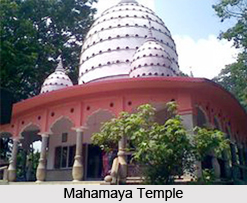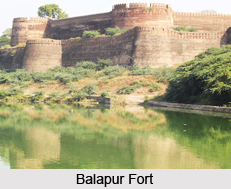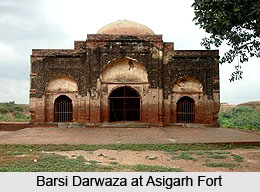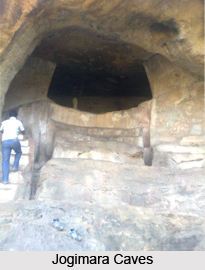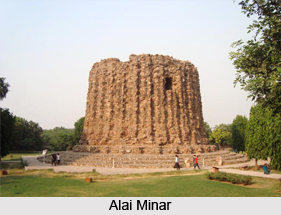 Alai Minar was commissioned by Ala-ud-din Khilji. The curious treatment of angular fluting, which may be likened in section to the outline of a flattened letter M, separated by deep canellures, is very distinct. The Alai Minar is an unfinished tower in the Qutub Complex, construction of which was started by Alauddin Khilji. After Khilji had doubled the size of the Quwwat-ul-Islam Mosque he decided to constructed a tower which would be twice the height of the Qutub Minar. Construction of the Alai Minar came to a halt in 1316 following the death of Alauddin Khilji. The whole minar was evidently based on a high, wide chabutra as theirs combined, and to be of twice the scale.
Alai Minar was commissioned by Ala-ud-din Khilji. The curious treatment of angular fluting, which may be likened in section to the outline of a flattened letter M, separated by deep canellures, is very distinct. The Alai Minar is an unfinished tower in the Qutub Complex, construction of which was started by Alauddin Khilji. After Khilji had doubled the size of the Quwwat-ul-Islam Mosque he decided to constructed a tower which would be twice the height of the Qutub Minar. Construction of the Alai Minar came to a halt in 1316 following the death of Alauddin Khilji. The whole minar was evidently based on a high, wide chabutra as theirs combined, and to be of twice the scale.
History of Alai Minar
Throughout the sovereignty of the Khilji dynasty, a renowned Sufi poet named Amir Khusro makes a mention in one of his works named `Tareekh-i-Alai` of the Sultan`s intentions to increase the size of the mosque and the plan to construct the Alai Minar. The building was completed up till the first row and at a height of 24.5 metres but unhappily, the construction was deserted after the death of Sultan Ala-ud-din Khalji in 1316 AD and the following successors could not continue further construction as they were defeated and the Delhi Sultanate was taken over by the Tughlaq dynasty.
Architecture of Alai Minar
The Alai Minar in fact looks like a piece of undulating rubble core that was definitely intended not to look like it does now but in fact would have been ornamentally decorated and covered with stone carvings, intricate design and art work as Ala-ud-din had planned. Though it comprises only the original core of the structure and that in a dilapidated condition, it is nevertheless possible to recognise several distinctive features that this great was intended to exhibit.
Inside the minar, it is very clear from the relative heights of the encircling windows that pierce the walls at every quadrant that the means of ascent was to be a very gradual ramp, and not a stair as in the smaller Qutub Minar of Qutbuddin Aibak and Iltutmish. Entered through a doorway on the east, the ramp would follow the inclination of these windows and ascend the minar from right to left.
